Chihiro Shibata
MLRegTest: A Benchmark for the Machine Learning of Regular Languages
Apr 16, 2023
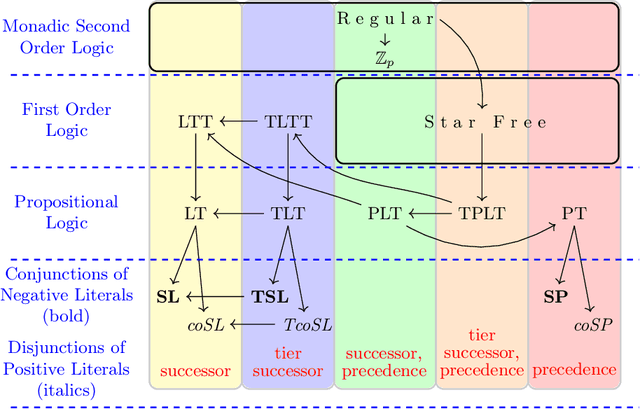
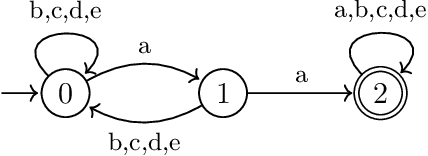
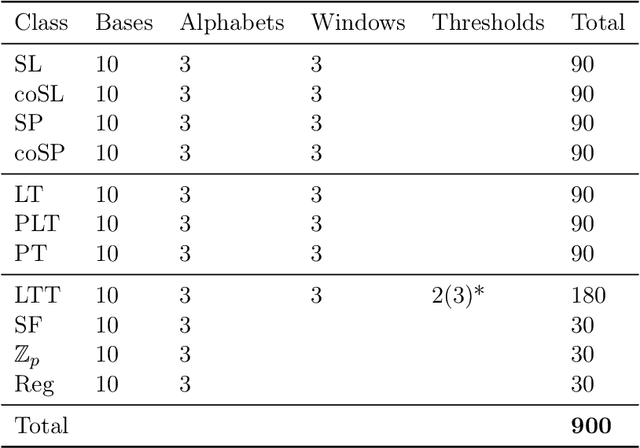
Abstract:Evaluating machine learning (ML) systems on their ability to learn known classifiers allows fine-grained examination of the patterns they can learn, which builds confidence when they are applied to the learning of unknown classifiers. This article presents a new benchmark for ML systems on sequence classification called MLRegTest, which contains training, development, and test sets from 1,800 regular languages. Different kinds of formal languages represent different kinds of long-distance dependencies, and correctly identifying long-distance dependencies in sequences is a known challenge for ML systems to generalize successfully. MLRegTest organizes its languages according to their logical complexity (monadic second order, first order, propositional, or monomial expressions) and the kind of logical literals (string, tier-string, subsequence, or combinations thereof). The logical complexity and choice of literal provides a systematic way to understand different kinds of long-distance dependencies in regular languages, and therefore to understand the capacities of different ML systems to learn such long-distance dependencies. Finally, the performance of different neural networks (simple RNN, LSTM, GRU, transformer) on MLRegTest is examined. The main conclusion is that their performance depends significantly on the kind of test set, the class of language, and the neural network architecture.
How LSTM Encodes Syntax: Exploring Context Vectors and Semi-Quantization on Natural Text
Oct 01, 2020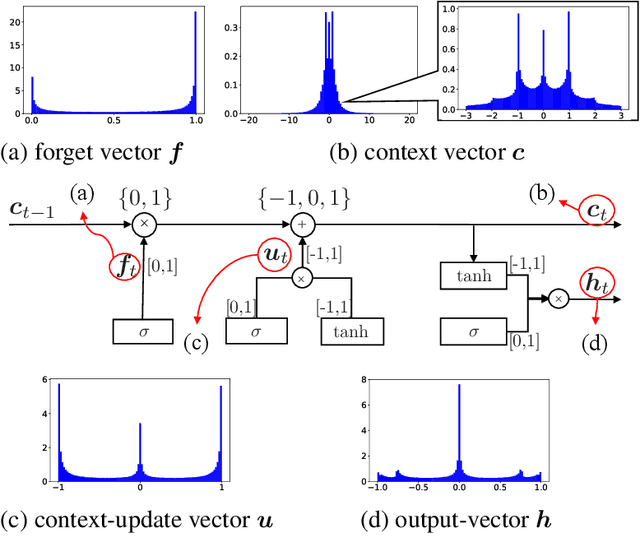
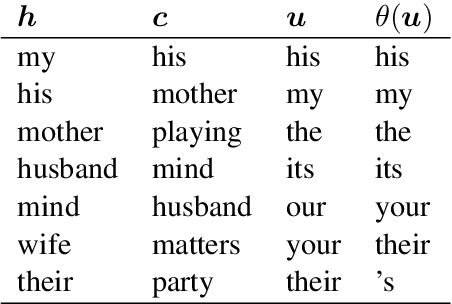
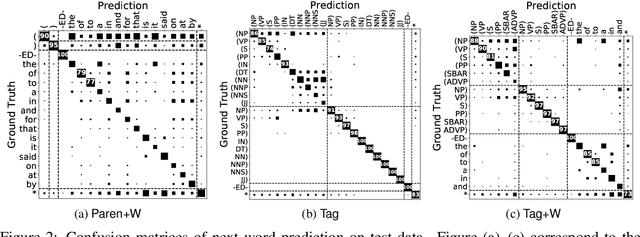
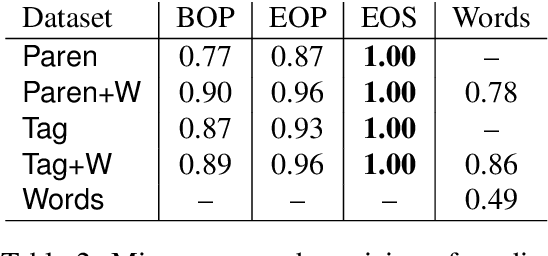
Abstract:Long Short-Term Memory recurrent neural network (LSTM) is widely used and known to capture informative long-term syntactic dependencies. However, how such information are reflected in its internal vectors for natural text has not yet been sufficiently investigated. We analyze them by learning a language model where syntactic structures are implicitly given. We empirically show that the context update vectors, i.e. outputs of internal gates, are approximately quantized to binary or ternary values to help the language model to count the depth of nesting accurately, as Suzgun et al. (2019) recently show for synthetic Dyck languages. For some dimensions in the context vector, we show that their activations are highly correlated with the depth of phrase structures, such as VP and NP. Moreover, with an $L_1$ regularization, we also found that it can accurately predict whether a word is inside a phrase structure or not from a small number of components of the context vector. Even for the case of learning from raw text, context vectors are shown to still correlate well with the phrase structures. Finally, we show that natural clusters of the functional words and the part of speeches that trigger phrases are represented in a small but principal subspace of the context-update vector of LSTM.
Subregular Complexity and Deep Learning
Oct 14, 2017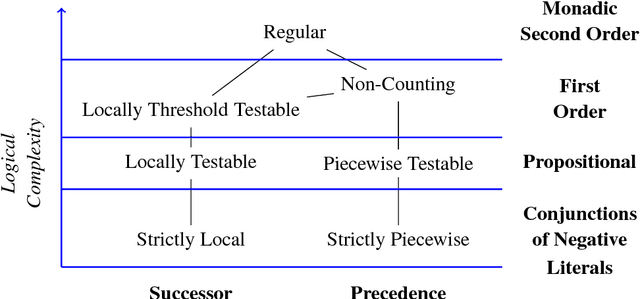

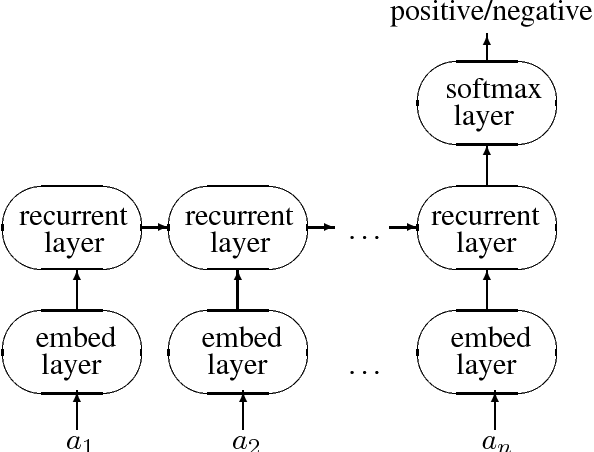
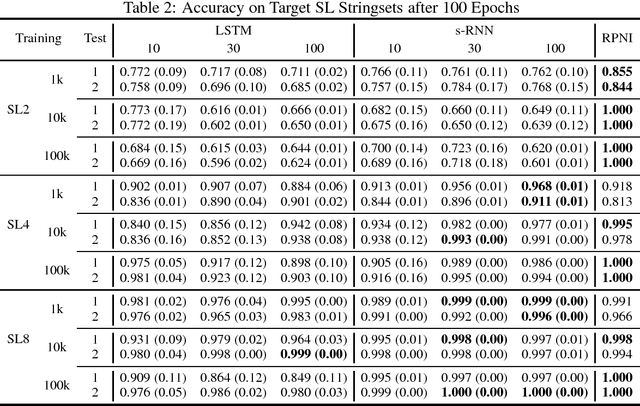
Abstract:This paper argues that the judicial use of formal language theory and grammatical inference are invaluable tools in understanding how deep neural networks can and cannot represent and learn long-term dependencies in temporal sequences. Learning experiments were conducted with two types of Recurrent Neural Networks (RNNs) on six formal languages drawn from the Strictly Local (SL) and Strictly Piecewise (SP) classes. The networks were Simple RNNs (s-RNNs) and Long Short-Term Memory RNNs (LSTMs) of varying sizes. The SL and SP classes are among the simplest in a mathematically well-understood hierarchy of subregular classes. They encode local and long-term dependencies, respectively. The grammatical inference algorithm Regular Positive and Negative Inference (RPNI) provided a baseline. According to earlier research, the LSTM architecture should be capable of learning long-term dependencies and should outperform s-RNNs. The results of these experiments challenge this narrative. First, the LSTMs' performance was generally worse in the SP experiments than in the SL ones. Second, the s-RNNs out-performed the LSTMs on the most complex SP experiment and performed comparably to them on the others.
 Add to Chrome
Add to Chrome Add to Firefox
Add to Firefox Add to Edge
Add to Edge